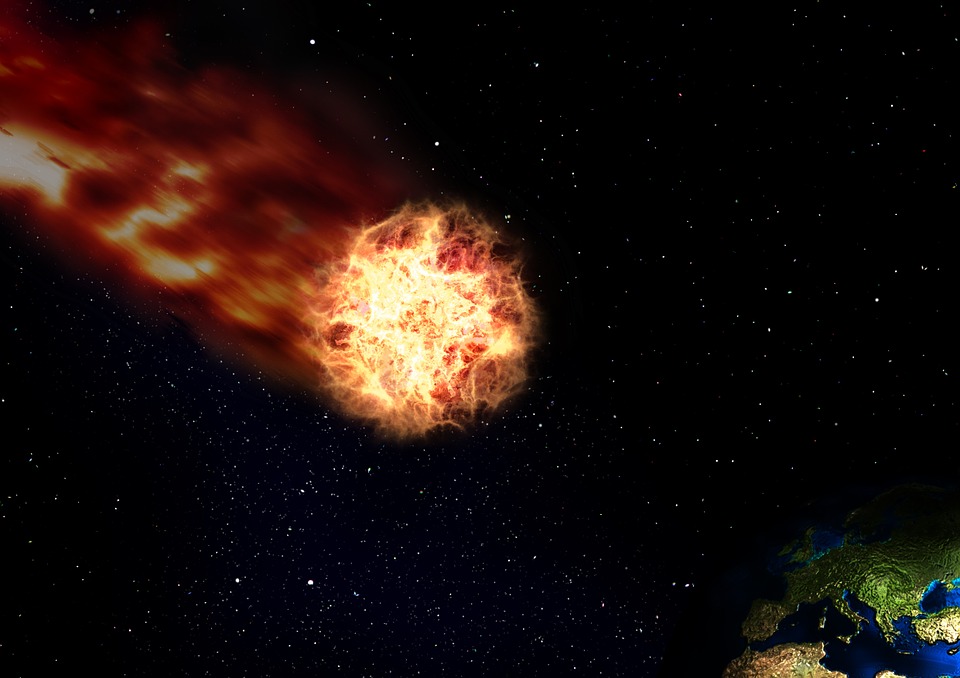Millions of years ago, the dinosaurs were made extinct by the impact of a very large asteroid that hit the Earth. Now, it seems like history is going to repeat itself as a space rock that is similar in size to that dinosaur-killing asteroid is going to hit the Earth again.
There are asteroids that may cause natural calamities, there are asteroids that may burn up upon entering the Earth’s atmosphere, and there are asteroids that could potentially wipe out entire countries and continents due to its size. Express reports that NASA has tracked an asteroid that is the same size as the one that killed the dinosaurs, and the bad news is that this same asteroid is bound to strike Earth again. The space agency has always kept tabs on asteroids that are approaching the planet’s orbit 90 percent of the time. This only means that the remaining 10 percent still have to be spotted.
NASA believes that there is a one in 300,000 chance of an asteroid collision on Earth. Even if it is a very small chance, there is still a chance of it happening. Physicist Dr. Rob van der Berg shared on Quora that impacts from asteroids the size of the one that killed the dinosaurs happen every several million years ago, but the chance of getting hit again is quite inevitable.
The space agency, on the other hand, says that even smaller asteroids than the one that wiped out the dinosaurs can still pack quite a punch if it ever collides with the Earth.
In another report, NASA says that comets have a much more dangerous impact on the Earth compared to asteroids. Some scientists even believe that what killed the dinosaurs millions of years ago was through a comet collision. This celestial body made up of gas, ice, and rock, does not follow an orbit, but instead appears out of nowhere, can potentially wipe out humanity if it strikes.
Comets also move a lot faster than asteroids because the orbits they follow are a lot more eccentric or elongated. These bodies are mostly made of ice, coming from deep space, and while they may seem small, there is a big chance that they are much larger than the asteroids that are already seen as hazardous.



 Kennedy Sets September Deadline to Uncover Autism Causes Amid Controversy
Kennedy Sets September Deadline to Uncover Autism Causes Amid Controversy  SpaceX’s Starship Completes 11th Test Flight, Paving Way for Moon and Mars Missions
SpaceX’s Starship Completes 11th Test Flight, Paving Way for Moon and Mars Missions  FDA Pilot Program Eases Rules for Nicotine Pouch Makers
FDA Pilot Program Eases Rules for Nicotine Pouch Makers  NASA Partners with Katalyst to Save Swift Observatory with Innovative Docking Mission
NASA Partners with Katalyst to Save Swift Observatory with Innovative Docking Mission  SpaceX Starship Explodes in Texas During Test, Citing Nitrogen Tank Failure
SpaceX Starship Explodes in Texas During Test, Citing Nitrogen Tank Failure  Lab-grown meat: you may find it icky, but it could drive forward medical research
Lab-grown meat: you may find it icky, but it could drive forward medical research  CDC Vaccine Review Sparks Controversy Over Thimerosal Study Citation
CDC Vaccine Review Sparks Controversy Over Thimerosal Study Citation  Is space worth the cost? Accounting experts say its value can’t be found in spreadsheets
Is space worth the cost? Accounting experts say its value can’t be found in spreadsheets  Cogent Biosciences Soars 120% on Breakthrough Phase 3 Results for Bezuclastinib in GIST Treatment
Cogent Biosciences Soars 120% on Breakthrough Phase 3 Results for Bezuclastinib in GIST Treatment  Trump Signs Executive Order to Boost AI Research in Childhood Cancer
Trump Signs Executive Order to Boost AI Research in Childhood Cancer  Blue Origin’s New Glenn Achieves Breakthrough Success With First NASA Mission
Blue Origin’s New Glenn Achieves Breakthrough Success With First NASA Mission  Astronomers have discovered another puzzling interstellar object − this third one is big, bright and fast
Astronomers have discovered another puzzling interstellar object − this third one is big, bright and fast 



























